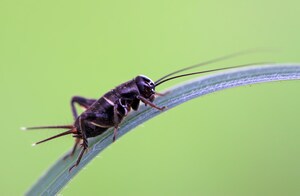DENVER, July 15, 2019 /PRNewswire/ -- Morris Animal Foundation-funded researchers at the University of Illinois identified a new fungus that could be a significant emerging pathogen of freshwater turtles. The new genus and species, Emydomyces testavorans, has been found in the shell lesions of Western pond turtles, and could be the agent responsible for ulcerative shell disease. The team published their findings in the Journal of Clinical Microbiology.
Ulcerative shell disease in turtles begins on the shell surface. Once established, lesions gradually eat away at the shell, moving down through the turtle's bone. Loss of the protective shell exposes the turtles to infections. A recent survey by the Washington Department of Fish and Wildlife found that as many as half of all examined Western pond turtles showed signs of the infection. Every time the shell lesions are analyzed, the fungus is found as well.
"Classifying the fungus is an important first step, and it allows us to answer some pretty big questions, like how it spreads and what role it plays in the disease," said Dr. Karen Terio, Chief of the university's Zoological Pathology Program. "The better we understand this fungus, the more veterinarians and wildlife biologists can develop health management strategies for impacted turtles."
The researchers originally believed the fungus to be a member of the Nannizziopsis species, which is a well-known pathogen of reptiles. To test this hypothesis, the team examined fungal samples from 70 individual turtles of various species, both live and deceased. Some samples were cultured on keratin from uninfected shells, while others required polymerase chain reaction-based testing (PCR) to amplify the fungi's DNA.
Their results showed that the fungus was taxonomically, genetically and morphologically different enough to warrant its own new genus and species.
The team also developed a PCR technique to rapidly detect the fungus. Veterinarians can scrape a shell lesion from which the team can extract DNA and test specifically for Emydomyces testavorans. The process only takes 48 hours, compared to the weeks required using a standard culture method.
"This is great news on how to combat a potential emerging disease, to not only identify a new fungus, but be able to quickly diagnose patients," said Dr. Janet Patterson-Kane, Morris Animal Foundation Chief Scientific Officer. "Now that we have a clearer picture of what could be causing this terrible disease, we can move on to testing treatments and learning more about the organism itself."
The fungus was first identified in turtles in zoos and has since been found in multiple wild populations, including the Western pond turtle, a vulnerable species found in the Pacific Northwest region of the United States. Further investigation is needed to determine if it the fungus is present in other populations of wild turtles.
The fungal shell disease itself was first identified in 2011, but photos and records reveal shells with similar lesions as far back as 2003, suggesting that it may be a previously unrecognized cause of shell disease in turtles.
About Morris Animal Foundation
Morris Animal Foundation's mission is to bridge science and resources to advance the health of animals. Founded by a veterinarian in 1948, we fund and conduct critical health studies for the benefit of all animals. Learn more at morrisanimalfoundation.org.
SOURCE Morris Animal Foundation

Related Links
https://www.morrisanimalfoundation.org
WANT YOUR COMPANY'S NEWS FEATURED ON PRNEWSWIRE.COM?
Newsrooms &
Influencers
Digital Media
Outlets
Journalists
Opted In






Share this article